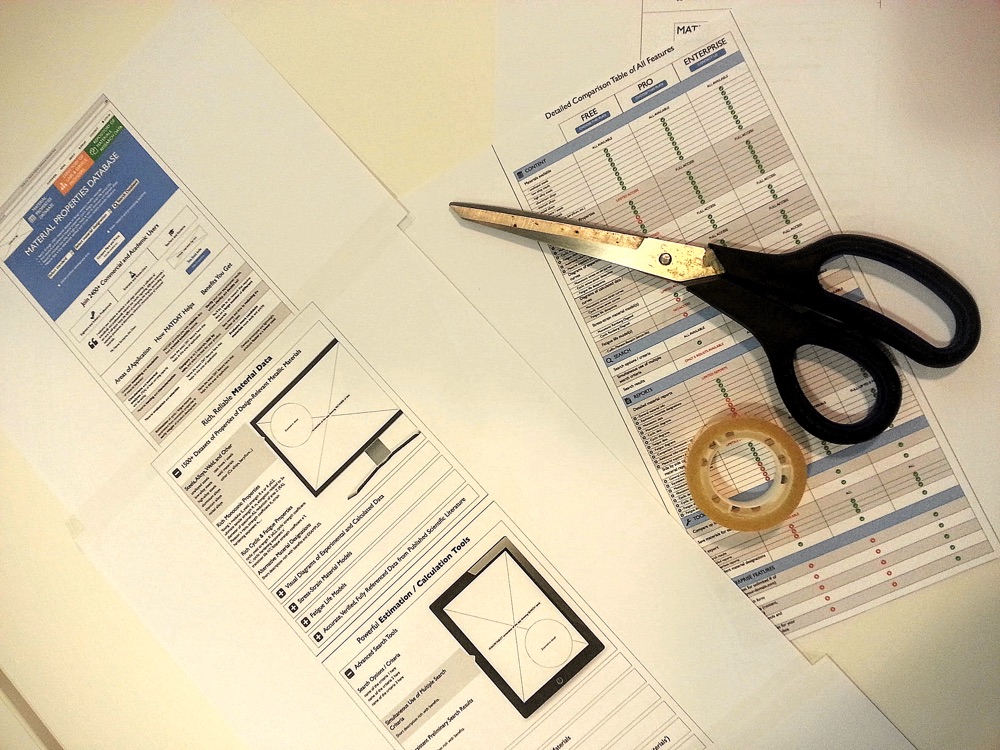I tell friends and family that I’m in “digital marketing”, but I realized that most of them haven’t the foggiest what I do all day.
I’m also increasingly asking myself in which direction I want to steer the rest of my career, so I felt the need to firmly define what is it that:
- I enjoy doing,
- am good at,
- pays well enough to finance the kind of life I want to have.
So, as part of my morning pages writing exercise, in which I write 750 words of publishable content, I decided to explain what I do for a living, who my ideal clients are, and why would they pay for what I do well.
(If you’re one of my friends / friendlies and you want to refer business to me, you can use this page to understand what kind of work I do best, and what I DON’T do. Thank you :)
My Work in a Nutshell
My official elevator pitch is this: I love restructuring and rewriting websites for experienced technology companies so that they get more customers online.
But, I’m not a web designer or a web programmer. I’m the person companies call before they hire web designers and website programmers to develop their website.
I do stuff that companies usually struggle with, and pay people like me to do for them:
- I create their digital marketing strategy,
- I create their website information architecture,
- I write their website content.
My outputs are website developers’ inputs, meaning that what I create is what website developers need to do their jobs well:
- a clear strategic definition of what a company should do with their website online, and what its goals are
- a website map (a definition of which pages should be present on the website and why, how many of them will there be, and what is their hierarchy)
- blueprints of individual website pages - we call those wireframes - which define how content on any individual website page should be structured
- website content: which words, pictures, and files should be published on the website
I’m a Digital Marketing Strategist
Business owners hire me because I can show them how to use the internet to achieve their marketing goals.
What this means is that I advise them and their teams on how to use the available digital assets to attract visitors online and convert them to customers.
When I say digital assets, I mean everything that the company owns, has earned, or has access to online:
- websites
- email newsletters
- blogs
- social channels
- search engines
- advertising networks
- media
- people with influence
- personal contacts
When I work with a client on their digital marketing strategy, my job is to:
- learn everything I possibly can about their business, given the time constraints
- figure out what my client should be doing online so that they achieve their business goals
- document what I came up with, so that we have a written blueprint (a strategy only becomes real when you write it down)
- work with my client and their teams on executing the documented strategy
I’m an Information Architect
Redoing website’s information architecture (IA) is similar to tidying up and rearranging your living room: once you move around the furniture, clear out the mess, and put everything in its place again, you feel like you want to spend more time there.
That’s why my clients hire me: they want a better website on which their customers would want to spend enough time to buy something. They don’t necessarily need to re-design and re-develop their entire website; they want what they already have to work better.
My clients usually already have a website when we first meet, but it needs more work because:
- visitors leave their website because important information is buried somewhere in the walls of text
- the navigation is confusing and needs to be restructured
- there’s too much useless stuff on the page, and everything becomes more hard to find
Technically speaking, my IA work includes:
- creating a website map, which defines the macro-architecture (website-level architecture)
- creating landing page templates, which define the micro-architecture (page-level architecture)
I reimagine how stuff is laid out on any particular website page, and when I implement my client’s remarks, my wireframes are often given to website developers so that they could build a website based on that.
Working on information architecture usually involves using wireframing tools such as:
Pen and Paper
This is how one of the wireframes I drew for a client project looks like on paper, while it’s still half-baked:

Huge whiteboard on the wall
This is me, working on a landing page architecture, trying to get a bigger picture:

Balsamiq - digital wireframing tool
This is an example of just one small part of one of the wireframes I created for a client project:

Most of the time I print out the website page wireframes on paper and tape paper sheets together to get a better feel for the entire page:

I’m a Website Content Writer
Business owners hire me because I can write or rewrite their website content so that it’s:
- more customer-centric
- more persuasive
- more readable
My clients are intelligent and experienced, but it’s often hard for them to focus on writing their own website content. This is because:
- they’re too busy running their companies
- they aren’t as experienced in writing
- many of them hate writing :)
- they’re “too close” to their business to be able to write objectively and persuasively about what they do.
So, when my clients ask me to (re)write their content, what I usually bring to the (content) table is this:
- fresh perspective
- clear writing (I’m dedicated to using data, proof, and examples to write more persuasively).
- I can spot and remove corporate bullshit-speak when I see it
- I can identify which content is missing, and I work with my clients on creating that content
I write new content from scratch, or I take whatever my client already has, and I write it anew.
To gather facts and information I need for writing, I use various content-gathering methods, such as:
- Recorded audio interviews: I hop on a conference call with my clients, ask them a bunch of questions, record the session, and write content based on what they told me.
- Special worksheets made for gathering content. That’s the stuff that I put into my B2B Website Content Guide.
- My clients send me their current marketing and sales collateral, such as presentations, product brochures, vendor catalogs, and I extract facts and data from there.
Who Are My Clients
It’s finally clear to me now who my best customers are:
- They’re owners of a technology company, usually selling software, complex technology solutions, business services, and high technology consulting services.
- They’re hugely experienced and run a mature business, rarely a startup.
- They used to do their digital marketing themselves, but their time is now more valuable elsewhere. That’s why they rather outsource content writing, strategy, and architecture to a capable individual / company.
- They take their digital presence seriously, and they’re willing to invest in it. This is mostly because their websites already generate certain business value.
- They share my values, such as: continuous improvement, precise and clear communication, seeing the bigger picture, long-term thinking.
- They’re geeks, and that’s why we happen to just click when we first meet.
Who Aren’t My Clients
I used to think I can work with anybody, but I was being naive. Not every business owner needs what I do because not everyone’s company is at the same level of maturity. Content writers, information architects, and digital marketing strategists are usually hired by companies who are already standing on solid ground, not by the ones under which the ground is still shaking.
For example, fledging small businesses don’t need an information architect or a digital marketing strategist, because their companies are still struggling with figuring out their sales, marketing, and business models. I’m not a business consultant: I can’t tell anyone how to build a profitable business. But I can help with building a solid foundation online for an already successful company.
Also, newbie entrepreneurs rarely hire content writers. They write their own content, and that’s ok. Before I became aware of the value of a professionally taken photograph, I used to take my own business photos. Today I hire professional photographers because they save my time and effort.